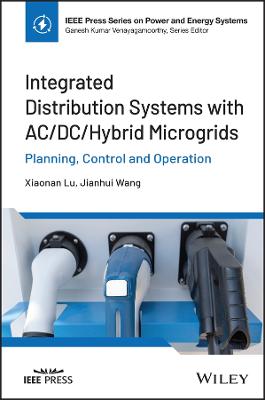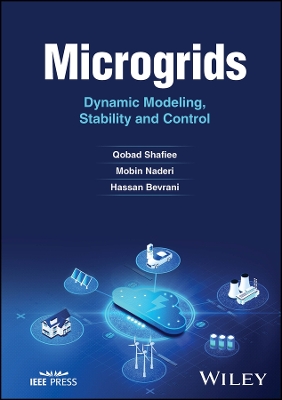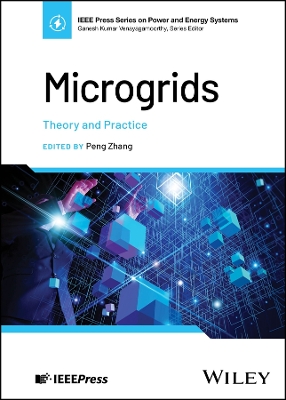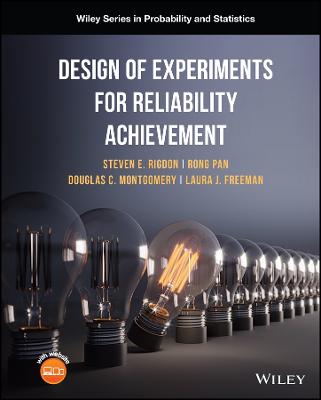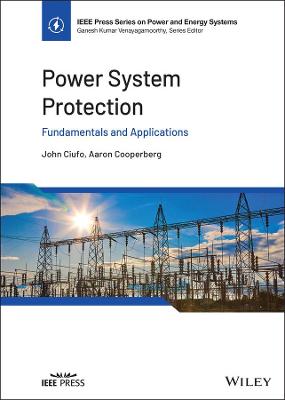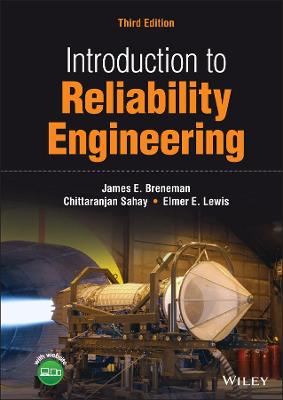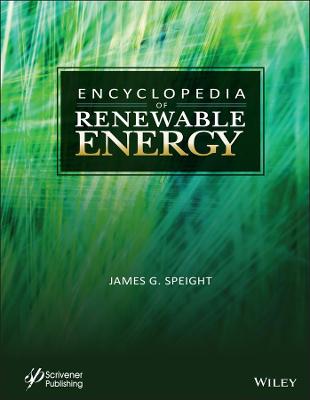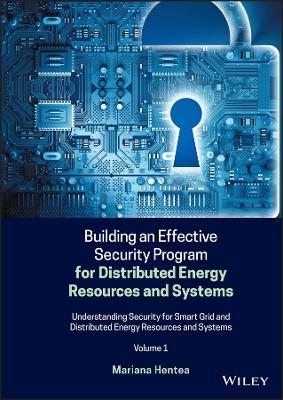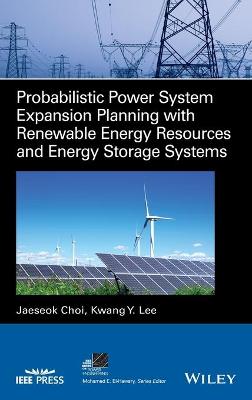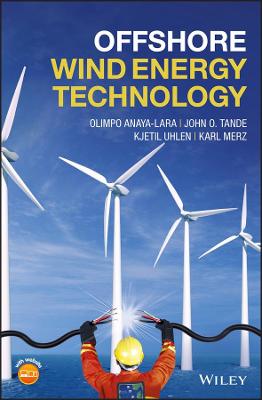Fast-Charging Infrastructure for Electric and Hybrid Electric Vehicles
 -15%
portes grátis
-15%
portes grátis
Fast-Charging Infrastructure for Electric and Hybrid Electric Vehicles
Methods for Large-Scale Penetration into Electric Distribution Networks
Chenniappan, Sharmeela; Palanisamy, Sivaraman; Sanjeevikumar, P.
John Wiley & Sons Inc
06/2023
240
Dura
Inglês
9781119987741
15 a 20 dias
666
About the Authors xiv
Acknowledgments xvi
1 Introduction to Electric Vehicle Fast-Charging Infrastructure 1
1.1 Introduction 1
1.2 Fast-Charging Station 4
1.2.1 Power Grid or Grid Power Supply 4
1.2.2 Power Cables 5
1.2.3 Switchgears 8
1.2.4 Distribution Transformer 8
1.2.5 Energy Meters and Power Quality Meters 9
1.2.6 Fast Chargers 10
1.2.7 Plugs and Connectors 10
1.2.7.1 CCS Combo 1 Connector 13
1.2.7.2 CHAdeMO Connector 13
1.2.7.3 Tesla Connectors 14
1.3 Fast-Charging Station Using Renewable Power Sources (RES) 14
1.4 Digital Communication for Fast-Charging Station 17
1.5 Requirements for Fast-Charging Station 19
1.6 Case Study: Public Fast-Charging Station in India 20
1.7 Conclusion 23
References 24
Annexure 1 Photos 26
2 Selection of Fast-Charging Station 31
2.1 Introduction 31
2.2 Business Model for Fast-Charging Stations 32
2.3 Location of Fast-Charging Station 33
2.4 Electric Supply for Fast Charging 35
2.5 Availability of Land 36
2.6 Conclusion 37
References 37
3 Business Model and Tariff Structure for Fast-Charging Station 39
3.1 Introduction 39
3.2 Business Model 41
3.2.1 Integrated Model 41
3.2.2 Independent Model 42
3.2.3 Selection of Business Model for Fast-Charging Station 43
3.2.4 Fast-Charging Infrastructure and Operating Expenses 44
3.3 Battery Swapping 45
3.4 Tariff Structure 47
3.4.1 Tariff Between Electric Utilities (DISCOMs) and Fast-Charging Stations 47
3.4.2 Tariff Between Fast-Charging Stations and EV Users 47
3.5 Conclusion 48
References 48
4 Batteries for Fast-Charging Infrastructure 51
4.1 Introduction 51
4.2 C-Rating of the Battery 52
4.3 Different Types of Chemistries 53
4.3.1 Li-Ion Family 54
4.3.2 Lead Acid 55
4.3.3 Nickel Family 55
4.3.4 Selection of Battery Chemistry 56
4.4 Batteries Used in EVs in the Market 56
4.5 Conclusion 58
References 58
5 Distribution System Planning 59
5.1 Introduction 59
5.2 Planning for Power and Energy Demand 62
5.3 Planning for Distribution System Feeders and Equipment 71
5.4 Conclusion 81
References 81
6 Electric Distribution for Fast-Charging Infrastructure 83
6.1 Introduction 83
6.2 Major Components of Fast-Charging Station 86
6.3 Design of Fast-Charging Station 86
6.3.1 Single Point of Failure 86
6.3.2 Configuration of Electrical Distribution Considering the Redundancy 88
6.3.2.1 Simple Radial Distribution Scheme for FCS 88
6.3.2.2 Expanded Radial Scheme for FCS 89
6.3.2.3 Primary Selective Scheme for FCS 89
6.3.2.4 Secondary Selective Scheme for FCS 93
6.3.2.5 Primary Loop Scheme for FCS 98
6.3.2.6 Sparing Transformer Configuration for FCS 98
6.3.2.7 Other Configurations for FCS 103
6.4 Conclusion 108
References 108
7 Energy Storage System for Fast-Charging Stations 111
7.1 Introduction 111
7.2 Renewables + ESS 112
7.2.1 Solar PV System without Battery Energy Storage System - Scheme 1 AC Interconnection 113
7.2.2 Solar PV System with Battery Energy Storage System - Scheme 2 AC Interconnection 114
7.2.3 Solar PV System with Battery Energy Storage System - Scheme 3 DC Interconnection 116
7.3 Microgrid with Renewables + ESS 118
7.3.1 Grid-Connected Microgrid for Fast-Charging Stations 119
7.3.2 Standalone Microgrid for Fast-Charging Stations 124
7.4 ESS Modes of Operation 124
7.5 Conclusion 127
References 128
8 Surge Protection Device for Electric Vehicle Fast-Charging Infrastructure 129
8.1 Introduction 129
8.2 Surge Protection for Fast-Charging Stations 132
8.2.1 Surge Protection for Open Locations 132
8.2.2 Surge Protection for Covered Locations 133
8.3 Surge Protection for Underground Locations 136
8.4 Conclusion 137
References 137
9 Power Quality Problems Associated with Fast-Charging Stations 139
9.1 Introduction 139
9.2 Introduction to Power Quality 140
9.3 Power Quality Problems Due to Fast-Charging Stations 142
9.3.1 Impact of Poor Power Quality of Distribution Grid on Fast-Charging Station Loads 143
9.3.2 Impact of Poor Power Quality from the Fast-Charging Station Loads on the Distribution Grid 144
9.4 Analysis of Harmonic Injection into the Distribution System 145
9.4.1 Hand Calculation or Manual Calculation 146
9.4.2 Conducting Field Measurements at the Site 146
9.4.3 Model Calibration 147
9.4.4 Computer Simulation 148
9.5 Analysis of System Resonance Condition 149
9.6 Analysis of Supra-Harmonics 152
9.7 Case Study: Harmonic Measurement of 30 kW DC Fast Charger 152
9.8 Conclusion 161
References 161
10 Standards for Fast-Charging Infrastructure 163
10.1 Introduction 163
10.2 IEC Standards 164
10.2.1 IEC 61851 164
10.2.2 IEC 61980 Electric Vehicle Wireless Power Transfer Systems 166
10.2.3 IEC 62196 Plugs, Socket-Outlets, Vehicle Connectors, and Vehicle Inlets - Conductive Charging of Electric Vehicles 168
10.2.4 IEC TR 62933-2-200 Electrical Energy Storage (EES) Systems - Part 2-200: Unit Parameters and Testing Methods - Case Study of EES Systems Located in EV Charging Station with PV 169
10.2.5 IEC 62893 Charging Cables for Electric Vehicles for Rated Voltages up to and Including 0.6/1 kV 169
10.2.6 IEC 60364-7-722 Low-Voltage Electrical Installations - Part 7-722: Requirements for Special Installations or Locations - Supplies for Electric Vehicles 172
10.3 IEEE Standards 172
10.3.1 IEEE Std 2030.1.1-2021 IEEE Standard for Technical Specifications for a DC Quick and Bidirectional Charger for Use with Electric Vehicles 172
10.3.2 IEEE Std 2836-2021 IEEE Recommended Practice for Performance Testing of Electrical Energy Storage (ESS) System in Electric Charging Stations in Combination with Photovoltaic (PV) 174
10.4 SAE Standards 174
10.4.1 SAE J1772 SAE Electric Vehicle and Plug-in Hybrid Electric Vehicle Conductive Charge Coupler 174
10.4.2 SAE J2894-1 2019 Power Quality Requirements for Plug-In Electric Vehicle Chargers 174
10.5 ISO 17409 Electrically Propelled Road Vehicles - Connection to an External Electric Power Supply - Safety Requirements 175
10.6 CEA Technical Standards in India 176
10.6.1 Technical Standards for Connectivity of the Distributed Generation Resources - February 2019 176
10.6.2 Technical Standards for Measures Relating to Safety and Electric Supply - June 2019 176
10.7 BS 7671-2018 Requirements for Electrical Installations 178
10.8 Conclusion 178
References 179
11 Fast-Charging Infrastructure for Electric Vehicles: Today's Situation and Future Needs 181
11.1 Batteries 181
11.1.1 Voltage 181
11.1.2 Improvements in Battery Chemistry 181
11.1.3 Standardization of Battery Ratings (Capacity, Voltage, and Dimensions) for Enabling Battery Swapping 183
11.2 Distributed Energy Storage System and Grid-Friendly Charging 185
11.3 Ultrafast Chargers 185
11.4 Interoperable Features 186
11.5 Charging the Vehicle While Driving (Wireless Charging) 186
11.6 Conclusion 187
References 187
12 A Review of the Improved Structure of an Electric Vehicle Battery Fast Charger 189
Mohammad Zand, Mostafa Azimi Nasab, Samaneh Rastgoo, and Morteza Azimi Nasab
12.1 Introduction 189
12.2 Types of Battery Charging 190
12.2.1 Li-Ion Battery Charger Algorithm 191
12.2.2 Constant Voltage-Current Charging Method 191
12.2.3 Constant Current Multilevel Charging Method 192
12.2.4 Method of Incremental Charging 193
12.2.5 Pulse Charging Method 193
12.2.6 Sinusoidal Pulse Charging Algorithm 195
12.2.7 Using a Different Frequency Pulse Charging Method (VFPCS) 195
12.2.8 Pulse Voltage Charging Method with Different Pulse Widths (DVVPCS) 196
12.2.9 An Overview of Lithium-Ion Batteries 196
12.2.10 Performance Comparison with Other Batteries 197
12.2.11 Lithium-Ion Battery Control System (BMS) 198
12.2.12 Cell Control 198
12.2.13 Checking Input and Output Current and Voltage 198
12.2.14 Battery Charge and Discharge Control 199
12.2.15 State Estimation 199
12.2.16 State of Charge 199
12.2.17 State of Health (SoH) 200
12.2.18 Mode of Operation (SoF) 201
12.2.19 Battery Protection 201
12.3 Temperature and Heat Control 203
12.3.1 Examining the Charger Structure 203
12.4 Bidirectional AC-DC Converters 206
12.4.1 Unidirectional AC-DC Converters 208
12.4.2 Unidirectional Isolated DC-DC Converters 208
12.4.3 Bidirectional Isolated DC-DC Converters 210
12.5 High-Frequency Transformers 210
12.5.1 High-Frequency Transformer Design 210
12.5.2 Core Geometry Method 211
12.5.3 Core Losses 211
12.6 Examine Some of the Charger Examples Provided in the References 212
12.7 Conclusion 218
References 219
Index 221
About the Authors xiv
Acknowledgments xvi
1 Introduction to Electric Vehicle Fast-Charging Infrastructure 1
1.1 Introduction 1
1.2 Fast-Charging Station 4
1.2.1 Power Grid or Grid Power Supply 4
1.2.2 Power Cables 5
1.2.3 Switchgears 8
1.2.4 Distribution Transformer 8
1.2.5 Energy Meters and Power Quality Meters 9
1.2.6 Fast Chargers 10
1.2.7 Plugs and Connectors 10
1.2.7.1 CCS Combo 1 Connector 13
1.2.7.2 CHAdeMO Connector 13
1.2.7.3 Tesla Connectors 14
1.3 Fast-Charging Station Using Renewable Power Sources (RES) 14
1.4 Digital Communication for Fast-Charging Station 17
1.5 Requirements for Fast-Charging Station 19
1.6 Case Study: Public Fast-Charging Station in India 20
1.7 Conclusion 23
References 24
Annexure 1 Photos 26
2 Selection of Fast-Charging Station 31
2.1 Introduction 31
2.2 Business Model for Fast-Charging Stations 32
2.3 Location of Fast-Charging Station 33
2.4 Electric Supply for Fast Charging 35
2.5 Availability of Land 36
2.6 Conclusion 37
References 37
3 Business Model and Tariff Structure for Fast-Charging Station 39
3.1 Introduction 39
3.2 Business Model 41
3.2.1 Integrated Model 41
3.2.2 Independent Model 42
3.2.3 Selection of Business Model for Fast-Charging Station 43
3.2.4 Fast-Charging Infrastructure and Operating Expenses 44
3.3 Battery Swapping 45
3.4 Tariff Structure 47
3.4.1 Tariff Between Electric Utilities (DISCOMs) and Fast-Charging Stations 47
3.4.2 Tariff Between Fast-Charging Stations and EV Users 47
3.5 Conclusion 48
References 48
4 Batteries for Fast-Charging Infrastructure 51
4.1 Introduction 51
4.2 C-Rating of the Battery 52
4.3 Different Types of Chemistries 53
4.3.1 Li-Ion Family 54
4.3.2 Lead Acid 55
4.3.3 Nickel Family 55
4.3.4 Selection of Battery Chemistry 56
4.4 Batteries Used in EVs in the Market 56
4.5 Conclusion 58
References 58
5 Distribution System Planning 59
5.1 Introduction 59
5.2 Planning for Power and Energy Demand 62
5.3 Planning for Distribution System Feeders and Equipment 71
5.4 Conclusion 81
References 81
6 Electric Distribution for Fast-Charging Infrastructure 83
6.1 Introduction 83
6.2 Major Components of Fast-Charging Station 86
6.3 Design of Fast-Charging Station 86
6.3.1 Single Point of Failure 86
6.3.2 Configuration of Electrical Distribution Considering the Redundancy 88
6.3.2.1 Simple Radial Distribution Scheme for FCS 88
6.3.2.2 Expanded Radial Scheme for FCS 89
6.3.2.3 Primary Selective Scheme for FCS 89
6.3.2.4 Secondary Selective Scheme for FCS 93
6.3.2.5 Primary Loop Scheme for FCS 98
6.3.2.6 Sparing Transformer Configuration for FCS 98
6.3.2.7 Other Configurations for FCS 103
6.4 Conclusion 108
References 108
7 Energy Storage System for Fast-Charging Stations 111
7.1 Introduction 111
7.2 Renewables + ESS 112
7.2.1 Solar PV System without Battery Energy Storage System - Scheme 1 AC Interconnection 113
7.2.2 Solar PV System with Battery Energy Storage System - Scheme 2 AC Interconnection 114
7.2.3 Solar PV System with Battery Energy Storage System - Scheme 3 DC Interconnection 116
7.3 Microgrid with Renewables + ESS 118
7.3.1 Grid-Connected Microgrid for Fast-Charging Stations 119
7.3.2 Standalone Microgrid for Fast-Charging Stations 124
7.4 ESS Modes of Operation 124
7.5 Conclusion 127
References 128
8 Surge Protection Device for Electric Vehicle Fast-Charging Infrastructure 129
8.1 Introduction 129
8.2 Surge Protection for Fast-Charging Stations 132
8.2.1 Surge Protection for Open Locations 132
8.2.2 Surge Protection for Covered Locations 133
8.3 Surge Protection for Underground Locations 136
8.4 Conclusion 137
References 137
9 Power Quality Problems Associated with Fast-Charging Stations 139
9.1 Introduction 139
9.2 Introduction to Power Quality 140
9.3 Power Quality Problems Due to Fast-Charging Stations 142
9.3.1 Impact of Poor Power Quality of Distribution Grid on Fast-Charging Station Loads 143
9.3.2 Impact of Poor Power Quality from the Fast-Charging Station Loads on the Distribution Grid 144
9.4 Analysis of Harmonic Injection into the Distribution System 145
9.4.1 Hand Calculation or Manual Calculation 146
9.4.2 Conducting Field Measurements at the Site 146
9.4.3 Model Calibration 147
9.4.4 Computer Simulation 148
9.5 Analysis of System Resonance Condition 149
9.6 Analysis of Supra-Harmonics 152
9.7 Case Study: Harmonic Measurement of 30 kW DC Fast Charger 152
9.8 Conclusion 161
References 161
10 Standards for Fast-Charging Infrastructure 163
10.1 Introduction 163
10.2 IEC Standards 164
10.2.1 IEC 61851 164
10.2.2 IEC 61980 Electric Vehicle Wireless Power Transfer Systems 166
10.2.3 IEC 62196 Plugs, Socket-Outlets, Vehicle Connectors, and Vehicle Inlets - Conductive Charging of Electric Vehicles 168
10.2.4 IEC TR 62933-2-200 Electrical Energy Storage (EES) Systems - Part 2-200: Unit Parameters and Testing Methods - Case Study of EES Systems Located in EV Charging Station with PV 169
10.2.5 IEC 62893 Charging Cables for Electric Vehicles for Rated Voltages up to and Including 0.6/1 kV 169
10.2.6 IEC 60364-7-722 Low-Voltage Electrical Installations - Part 7-722: Requirements for Special Installations or Locations - Supplies for Electric Vehicles 172
10.3 IEEE Standards 172
10.3.1 IEEE Std 2030.1.1-2021 IEEE Standard for Technical Specifications for a DC Quick and Bidirectional Charger for Use with Electric Vehicles 172
10.3.2 IEEE Std 2836-2021 IEEE Recommended Practice for Performance Testing of Electrical Energy Storage (ESS) System in Electric Charging Stations in Combination with Photovoltaic (PV) 174
10.4 SAE Standards 174
10.4.1 SAE J1772 SAE Electric Vehicle and Plug-in Hybrid Electric Vehicle Conductive Charge Coupler 174
10.4.2 SAE J2894-1 2019 Power Quality Requirements for Plug-In Electric Vehicle Chargers 174
10.5 ISO 17409 Electrically Propelled Road Vehicles - Connection to an External Electric Power Supply - Safety Requirements 175
10.6 CEA Technical Standards in India 176
10.6.1 Technical Standards for Connectivity of the Distributed Generation Resources - February 2019 176
10.6.2 Technical Standards for Measures Relating to Safety and Electric Supply - June 2019 176
10.7 BS 7671-2018 Requirements for Electrical Installations 178
10.8 Conclusion 178
References 179
11 Fast-Charging Infrastructure for Electric Vehicles: Today's Situation and Future Needs 181
11.1 Batteries 181
11.1.1 Voltage 181
11.1.2 Improvements in Battery Chemistry 181
11.1.3 Standardization of Battery Ratings (Capacity, Voltage, and Dimensions) for Enabling Battery Swapping 183
11.2 Distributed Energy Storage System and Grid-Friendly Charging 185
11.3 Ultrafast Chargers 185
11.4 Interoperable Features 186
11.5 Charging the Vehicle While Driving (Wireless Charging) 186
11.6 Conclusion 187
References 187
12 A Review of the Improved Structure of an Electric Vehicle Battery Fast Charger 189
Mohammad Zand, Mostafa Azimi Nasab, Samaneh Rastgoo, and Morteza Azimi Nasab
12.1 Introduction 189
12.2 Types of Battery Charging 190
12.2.1 Li-Ion Battery Charger Algorithm 191
12.2.2 Constant Voltage-Current Charging Method 191
12.2.3 Constant Current Multilevel Charging Method 192
12.2.4 Method of Incremental Charging 193
12.2.5 Pulse Charging Method 193
12.2.6 Sinusoidal Pulse Charging Algorithm 195
12.2.7 Using a Different Frequency Pulse Charging Method (VFPCS) 195
12.2.8 Pulse Voltage Charging Method with Different Pulse Widths (DVVPCS) 196
12.2.9 An Overview of Lithium-Ion Batteries 196
12.2.10 Performance Comparison with Other Batteries 197
12.2.11 Lithium-Ion Battery Control System (BMS) 198
12.2.12 Cell Control 198
12.2.13 Checking Input and Output Current and Voltage 198
12.2.14 Battery Charge and Discharge Control 199
12.2.15 State Estimation 199
12.2.16 State of Charge 199
12.2.17 State of Health (SoH) 200
12.2.18 Mode of Operation (SoF) 201
12.2.19 Battery Protection 201
12.3 Temperature and Heat Control 203
12.3.1 Examining the Charger Structure 203
12.4 Bidirectional AC-DC Converters 206
12.4.1 Unidirectional AC-DC Converters 208
12.4.2 Unidirectional Isolated DC-DC Converters 208
12.4.3 Bidirectional Isolated DC-DC Converters 210
12.5 High-Frequency Transformers 210
12.5.1 High-Frequency Transformer Design 210
12.5.2 Core Geometry Method 211
12.5.3 Core Losses 211
12.6 Examine Some of the Charger Examples Provided in the References 212
12.7 Conclusion 218
References 219
Index 221

